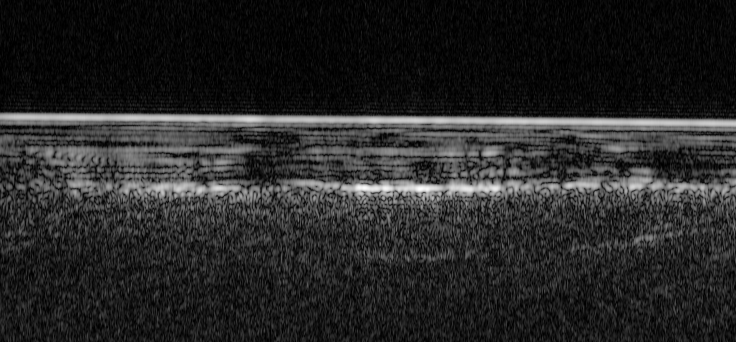Water On Mars: Lake Found One Mile Below Red Planet’s South Pole
For years, scientists have known that Mars once had liquid water, which may have made conditions on the red planet suitable to host life. Several river valleys and outflow channels hint at the watery past, but the evidence of liquid water in the present day scenario wasn’t found, not until now.
Scientists believe that the Martian climate and atmosphere has changed a lot over billions of years, making its surface incapable of hosting liquid water or a lake. However, the possibility of subsurface water has always been suspected, something that a team of Italian researchers has proven by discovering a huge reservoir of liquid water just a mile (1.5km) below layers of ice and dust at its South Pole.

The possible signs of the water body were spotted by a team of Italian researchers analyzing data collected by European Space Agency’s Mars Express spacecraft. They used the space probe’s MARSIS (Mars Advanced Radar for Subsurface and Ionosphere Sounding) radar instrument to explore the 200km wide region on the southern polar ice cap between May 2012 and December 2015.
The group, which included researchers from different institutes, developed novel techniques to collect and interpret high-resolution radar imagery. This involved transmitting radar pulses to the region, called Planum Australe, and using the strength and timing of the reflected signals to understand what lies beneath the surface and its features.
They took as many as 29 radar observations of the region and found that several layers of ice and dust go deep beneath the surface, but in one 20km wide region, they found that the transmitted signal returned more brightly compared to those returning from other parts. This, combined with expected subsurface temperatures and composition of layered deposits, indicated the presence of a liquid lake below the polar ice cap.
“This subsurface anomaly on Mars has radar properties matching water or water-rich sediments,” Roberto Orosei, principal investigator of the MARSIS experiment and lead author of the study, said in a statement. “This is just one small study area; it is an exciting prospect to think there could be more of these underground pockets of water elsewhere, yet to be discovered.”
The finding, as the researchers described, is similar to subglacial lakes discovered several kilometers below the ice in Arctic and Antarctica. This has long been posited because the pressure of overlying glacier and salty material on Mars could decrease the melting point of water and keep it in a liquid state, even when temperatures are way below the freezing point.
More importantly, as life has been found in such environments on Earth, chances are that something similar might have existed in the Martian subglacial lake too, either now or in the distant past. However, all of that still remains to be established. Future investigation of this and other polar regions might provide more insight into the presence of subsurface liquid water as well as into the possibility of life our neighboring world.
The study, titled "Radar evidence of subglacial liquid water on Mars," was published July 25 in the journal Science.

© Copyright IBTimes 2024. All rights reserved.





















